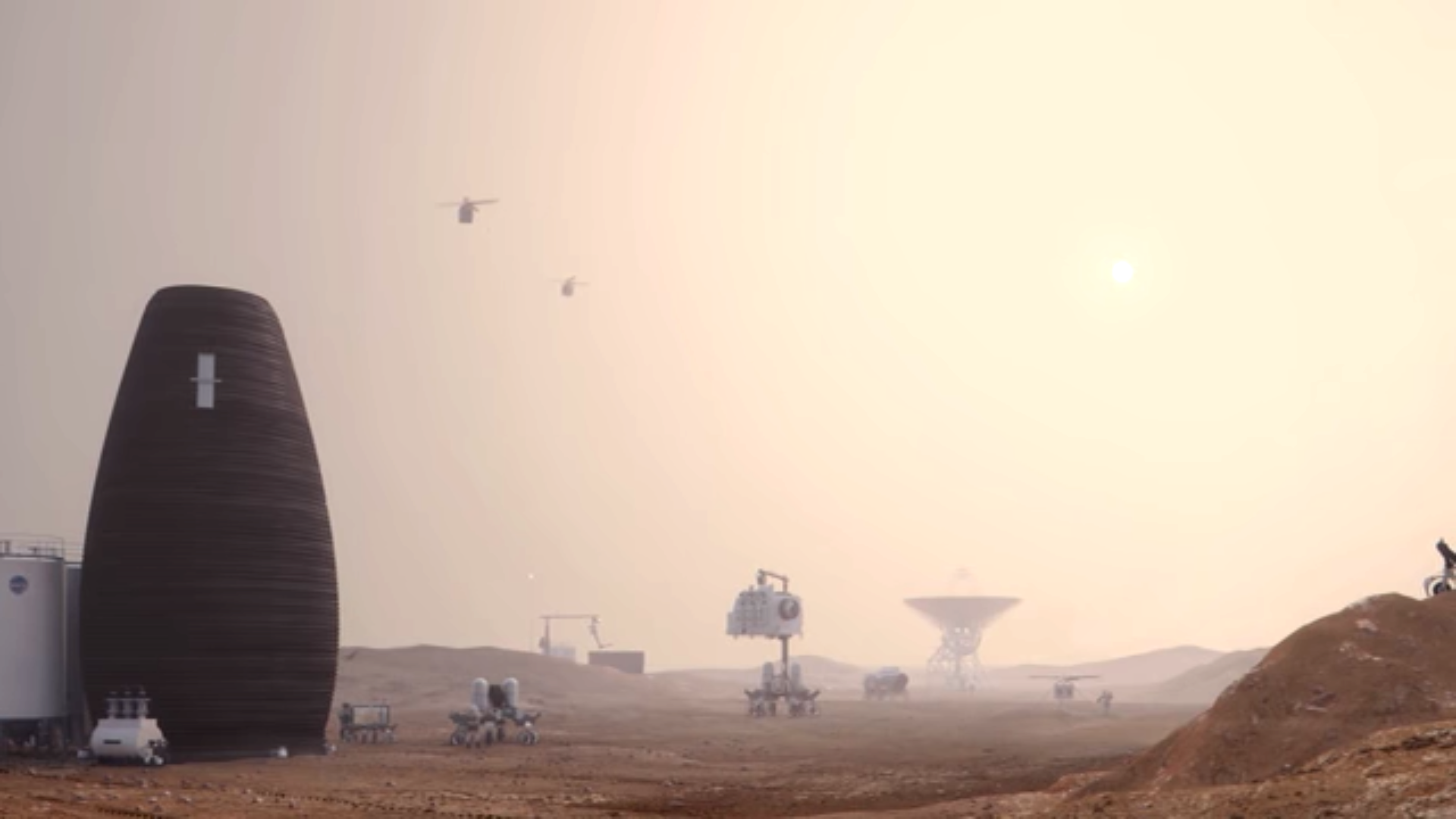How to design human homes for alien planets
What will our Martian homes look like?


The first humans to set foot on Mars will be greeted by an unfamiliar and unfriendly climate: dust storms, freezing temperatures, and intense radiation will bombard their bodies the moment they descend on the planet's surface. To survive in this hostile landscape, settlers will need man-made habitats that can support human life by mimicking conditions on Earth. But as architects and engineers aim to devise space structures that can stand up to a hazardous external environment, they also face an equally vexing problem: How do they use design to make astronauts feel relaxed and at home in an otherwise alien world?
With SpaceX striving to send a crew to Mars in 2024, and NASA planning to follow suit in the 2030s, the race to design Martian homes is well underway. But no one knows how Mars-bound travelers will cope as the only place they've ever called home — Earth — fades from sight. Homesickness and depression could set in quickly, says Nick Kanas, a psychiatrist and professor emeritus at the University of California, San Francisco, who has studied psychological problems in astronauts for NASA. This poses a challenge. After all, crew wellbeing is as critical to a mission's success as functioning equipment.
So how do you design a home for a human in a non-human world? Kanas suggests space architects start with something very simple: a view of Earth. Simply being able to see home could actually help stave off homesickness, he says. "I think it's worth installing a telescope so that the crew of a Mars mission can look at the Earth in almost real time," he says. "The image could even be projected onto a screen that looks like a window. It might also help to have some kind of virtual reality system that allows the crew to see their homes and visit their families."
The Week
Escape your echo chamber. Get the facts behind the news, plus analysis from multiple perspectives.

Sign up for The Week's Free Newsletters
From our morning news briefing to a weekly Good News Newsletter, get the best of The Week delivered directly to your inbox.
From our morning news briefing to a weekly Good News Newsletter, get the best of The Week delivered directly to your inbox.
What about cabin fever? One of the best ways to relieve stress here on Earth is by simply stepping outside and breathing in the fresh air, feeling the wind on your face, or just getting some time to yourself. On Mars, that won't really be possible, and tensions could rise quickly when a handful of people are confined to a small space for extended periods of time. Kanas says the strain of living in such restricted conditions can lead to "interpersonal problems that are difficult to express openly, given that one must depend on these same people for support and assistance in accomplishing mission goals."
To keep strife from boiling over and jeopardizing a mission, Kanas says architects have to incorporate private spaces in their Martian home designs. "A habitat on Mars needs to be large enough for everyone to have a space they can retreat to when they get tired of interacting with other crew members," he says. And even if astronauts can't just open the door and step outside, a view to the world beyond the habitat could substitute. "Hopefully this space has a window or a way to see outside to give crew members a sense of looking away."
Another idea comes from New York architecture firm AI SpaceFactory, which recently won second prize in NASA's 3D-printed Habitat competition with a design called "Marsha." It is egg-shaped, vertical, and has no doors, corridors, or rooms. Instead, it has multiple open-plan "zones" — as opposed to closed-off rooms — so that inhabitants would have privacy without the chance to wholly isolate themselves.
"We wanted to provide astronauts with the important sense of being alone, yet not so alone that they turn inwards and despair," explains Jeffrey Montes, the space architect who led the team responsible for Marsha. "We designed a structure that has levels to give crew members lines of sight to their teammates, and an awareness of each other's presence. This means they're unable to lock themselves up, but can still have space to be solitary."
A free daily email with the biggest news stories of the day – and the best features from TheWeek.com
Montes and his team also incorporated a large, water-filled skylight and intermittent windows so that Marsha's residents have plenty of diffuse natural light, which is key: Light exposure is important for maintaining circadian rhythms. Luckily, one day on Mars is only 40 minutes longer than one day on Earth, so astronauts wouldn't need to make a massive adjustment to their rhythms. But Montes also thinks access to natural light could help astronauts develop a connection to the Martian environment.
"People need to be aware of what time it is during the day, because that's important for avoiding monotony," he says. "There might not be rich fluffy clouds or rain, but if you're there long enough, every day and every sunset will start to look a little different."
Marsha also features a dedicated exercise space and a hydroponic garden so that inhabitants can wind down and enjoy activities outside of their work. The garden won't be able to provide much food for Martian explorers — though they could potentially grow a handful of fresh ingredients — but it will provide a connection to nature that astronauts would otherwise lack. "It's psychologically important to have a relationship with something non-human that is based on sight, touch, and smell," Montes says.
Living on Mars will never be easy. But with good design, the homes we build on alien planets will keep astronauts sane and happy by reminding them what it means to be human.
Jennifer Johnson is a writer and reporter based in London, England. Her stories explore the intersections of science, technology, and policy.
-
 Political cartoons for November 27
Political cartoons for November 27Cartoons Thursday's political cartoons include giving thanks, speaking American, and more
-
 We Did OK, Kid: Anthony Hopkins’ candid memoir is a ‘page-turner’
We Did OK, Kid: Anthony Hopkins’ candid memoir is a ‘page-turner’The Week Recommends The 87-year-old recounts his journey from ‘hopeless’ student to Oscar-winning actor
-
 The Mushroom Tapes: a compelling deep dive into the trial that gripped Australia
The Mushroom Tapes: a compelling deep dive into the trial that gripped AustraliaThe Week Recommends Acclaimed authors team up for a ‘sensitive and insightful’ examination of what led a seemingly ordinary woman to poison four people
